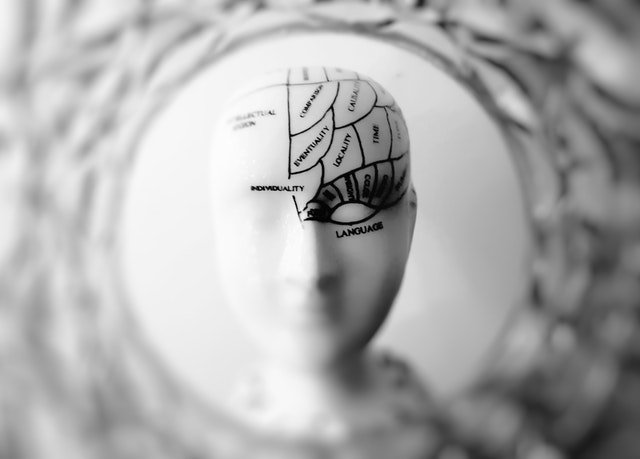
The human brain is made up of at least 86 billion neurons, each with its own set of connections.
According to recent studies, a cubic millimeter (one millionth) of the brain contains 1.4 petabytes worth of nerve cells, blood cells, and other cellular components.
As Monique Brouillette points out, a petabyte is “about the same amount of information as stored in 74,000 laptops”.
To map out all of these connections would be an impossible task, but scientists have been able to make some generalizations about how different areas of the brain are connected.
For example, the front part of the brain (the prefrontal cortex) is thought to be responsible for higher-level cognition, while the back part of the brain (the posterior cortex) is responsible for more basic functions like vision and movement.
However, there are some limitations to what we can learn from brain mapping.
First of all, the brain is constantly changing and growing, so any map that we create will only be accurate for a certain point in time.
Secondly, different people may use different parts of the brain to carry out the same task, so one map will not be able to describe everyone’s brain.
Finally, the brain is a complex organ and scientists are still learning a great deal about its workings.
What can we learn from brain mapping?
Well, although the task is daunting, it is possible to get a general idea of how different areas of the brain are connected. This information can be useful for understanding how the brain works and for diagnosing and treating brain disorders.
Additionally, brain mapping can help us to learn more about how the human mind works, including such complex tasks as thinking, reasoning, and decision-making.
So far, scientists have been able to map out the brains of animals up to a certain level of complexity. However, they have yet to map the human brain in its entirety.
This is due, in part, to the fact that the human brain is constantly changing and growing. Additionally, different people may use different parts of the brain to carry out the same task.
Finally, the brain is a complex organ and scientists are still learning a great deal about its workings.
All of this means that there is still much to learn about the brain and its connection to human cognition.
Nevertheless, brain mapping has already yielded some valuable information about how the human brain works and scientists continue to make new discoveries.
What we can learn from brain mapping is still limited, but scientists have been able to make some generalizations about how different areas of the brain are connected.
For example, the front part of the brain (the prefrontal cortex) is thought to be responsible for higher-level cognition, while the back part of the brain (the posterior cortex) is responsible for more basic functions like vision and movement.
Additionally, brain mapping can help us to learn more about how the human mind works, including such complex tasks as thinking, reasoning, and decision-making.
Despite its limitations, brain mapping has already yielded some valuable information about how the human brain works.
Scientists continue to make new discoveries and the map of the brain will continue to evolve as our understanding of this complex organ grows.
How do you map brain activity?
One way to map brain activity is by using a technique called functional magnetic resonance imaging (fMRI).
This technique uses MRI scans to measure the level of blood flow in different parts of the brain.
By correlating this data with brain activity, scientists can create a map of which areas of the brain are active when a person is performing a certain task.
Another way to map brain activity is by using electrodes to measure the electrical activity of different parts of the brain. This method is often used in research studies, as it allows scientists to track the firing of neurons in real time.
Both of these methods have their limitations and scientists are still learning a great deal about how to map brain activity.
Can brain mapping diagnose autism?
There is no single answer to this question as an autism spectrum disorder (ASD) is a complex condition with a wide range of symptoms.
However, some studies have used brain mapping to investigate differences in brain structure and function between people with ASD and those without the condition.
One study found that people with ASD had less activity in the prefrontal cortex, which is responsible for higher-level cognition.
Another study found that people with ASD had more connections between certain areas of the brain, which may be responsible for their characteristic behaviors and symptoms.
Or another study as well that impaired brain linked to autism (ASD).
While these studies provide some valuable information, more research is needed to determine how brain mapping can be used to diagnose ASD.
Nevertheless, this technology has the potential to improve our understanding of this complex condition and to develop more effective treatments.
What are the ethical concerns with brain mapping?
One of the ethical concerns with brain mapping is the issue of informed consent.
This is because brain mapping requires the use of invasive techniques, such as fMRI or electrodes, which can pose risks to the person being tested.
Another concern is the issue of data confidentiality.
Brain mapping generates a great deal of personal information about an individual, which could be used to discriminate against them if it fell into the wrong hands.
Finally, there is the concern that brain mapping could be used to control or manipulate people.
For example, if someone was able to map out the areas of the brain responsible for a person’s emotions, they could theoretically manipulate those emotions.
These are just some of the ethical concerns that need to be considered when brain mapping is used.
What are the future applications of brain mapping?
The future applications of brain mapping are limited only by our imagination.
As our understanding of the brain grows, we may be able to use brain mapping to diagnose and treat a variety of conditions, including autism spectrum disorder, Alzheimer’s disease, and depression.
Brain mapping may also be used to improve our understanding of human cognition and to develop new and better ways to learn and remember information.
Additionally, it could be used to improve our decision-making abilities and to create more efficient and effective workplaces, Since brain stimulation related to the problem solving.
Finally, brain mapping could be used to create personalized treatments that are tailored to the individual needs of each patient.
The potential applications of brain mapping are truly endless and we are only just beginning to scratch the surface of this exciting field.
Conclusion
Brain mapping is a relatively new field that is constantly evolving. It has the potential to revolutionize our understanding of the brain and improve our ability to diagnose and treat conditions like autism spectrum disorder.
However, there are also some ethical concerns that need to be considered before this technology can be used more widely.
Despite these concerns, brain mapping holds great promise for the future and we are only just beginning to explore its potential applications.



